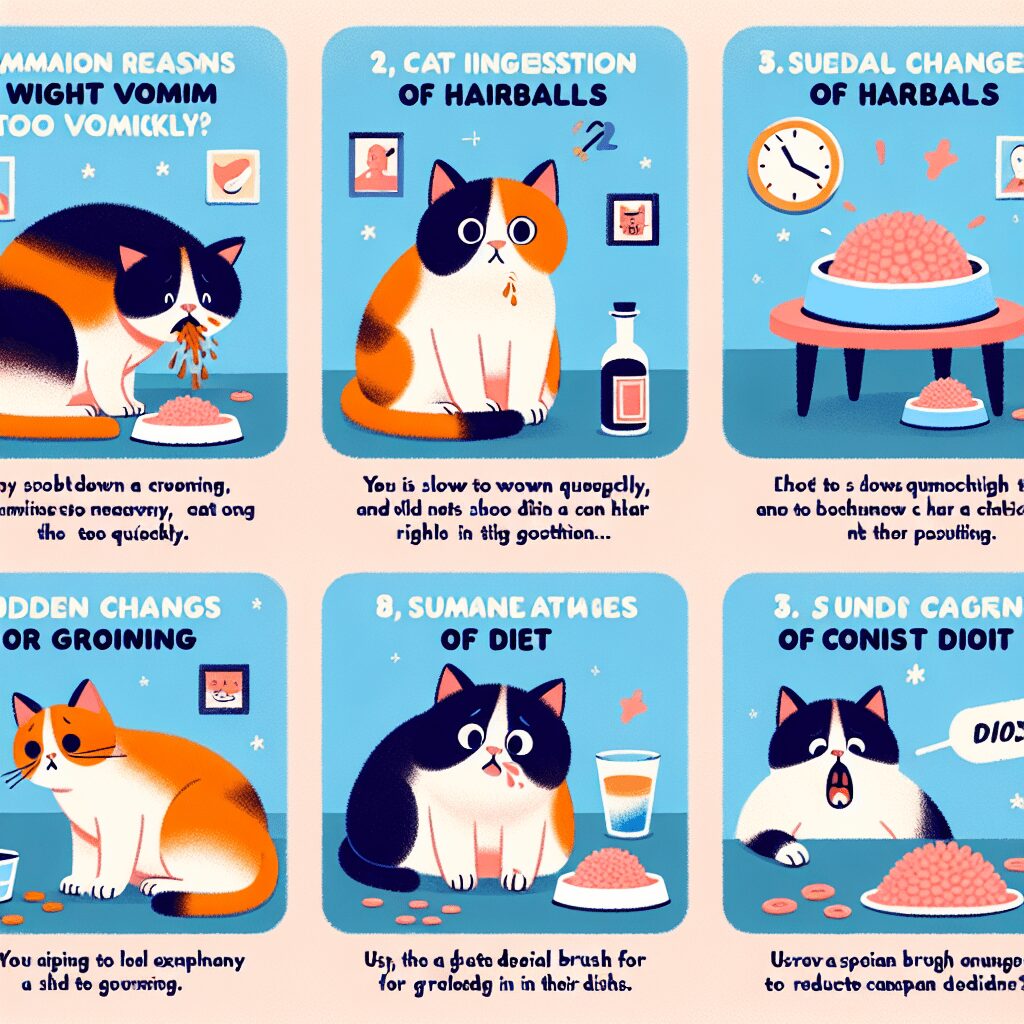Is Your Cat Throwing Up? Top Reasons and Solutions Explored!
Caring for your feline friend can be a delightful journey, but it often comes with challenges, especially if your cat is throwing up. Understanding the reasons behind this behavior is crucial in maintaining your cat’s health and happiness. Frequent vomiting can be alarming, but with the right knowledge and solutions, you can address this issue effectively.
Chapter 1: Overview of Cat Vomiting
Cats vomit for various reasons, ranging from simple hairballs to more serious health issues. It’s essential to observe your cat’s overall health and the frequency of the vomiting. Occasional vomiting might not signal a severe problem, but if it becomes routine, taking action is vital. Observing what your cat throws up and any accompanying symptoms can provide critical clues.
Many factors influence a cat’s propensity to vomit. The consistency, color, and content of the vomit can help you identify the underlying cause. Hairballs, undigested food, or bile indicate different issues needing attention.
Chapter 2: Common Reasons Why Cats Vomit
Understanding why your cat is throwing up is instrumental in addressing the issue. Here are several common reasons:
- Hairballs: Cats groom themselves, swallowing hair that may accumulate and cause blockages.
- Dietary Changes: Switching foods abruptly can upset their stomach.
- Overeating: Eating too quickly can lead to vomiting.
- Food Sensitivities: Some cats may react negatively to specific ingredients.
- Infections: Gastrointestinal infections can cause vomiting.
- Parasites: Worms and other parasites contribute to digestive issues.
- Toxins: Access to harmful substances induces vomiting as a protective response.
- Stress: Environmental changes or stress can upset your cat’s stomach.
- Illness: Conditions such as kidney disease, diabetes, or hyperthyroidism require veterinary attention.
- Foreign Objects: Ingesting toys or other items can block the digestive tract.
Identifying the cause is the first step toward finding a solution.
Chapter 3: Who Is Affected by Cat Vomiting?
Cat vomiting impacts not just the cat but also the owner. It can lead to concern and stress for cat parents as they navigate their pet’s health. Cat owners of all kinds—whether seasoned veteran or new pet parent—should learn the signs that indicate when a vet visit is essential.
Understanding the dynamics of your cat’s health will foster a deeper bond. Regular monitoring of your pet’s behavior can create awareness for potential health issues.
Chapter 4: What Should You Do When Your Cat Vomits?
When you discover your cat has vomited, several steps should be taken to assess the situation:
- Observe the Vomit: Take note of the color, consistency, and contents.
- Monitor Your Cat: Watch for other symptoms like lethargy, diarrhea, or changes in appetite.
- Limit Food: Give your cat a brief fast to allow their stomach to settle.
- Hydration: Ensure access to plenty of fresh water.
- Gradual Food Introduction: Reintroduce food slowly after a fasting period with bland options like boiled chicken.
- Consult a Vet: If vomiting persists, seek veterinary advice with details gathered.
Taking immediate action can help alleviate concerns and promote your cat’s well-being.
Chapter 5: When to Consult a Veterinarian
The moment you should seek professional help varies by situation. If vomiting is frequent or accompanied by concerning signs such as:
- Lack of appetite
- Severe lethargy
- Blood in vomit
- Diarrhea
- Weight loss
Consulting with a veterinarian is crucial. Understanding when to seek help ensures your cat receives timely care.
Chapter 6: Pros and Cons of Treatments
Managing vomiting in cats might involve dietary changes, medication, or other approaches.
Pros:
- Increased awareness of your cat’s health.
- Tailoring of diet and care to eliminate triggers.
- Possible resolution of underlying health issues.
Cons:
- Some treatments may involve trial and error.
- Dietary changes may take time for your cat to adjust to.
- Financial costs associated with veterinary visits and treatments.
Finding the right path requires dedication and patience.
Chapter 7: Alternative Solutions and Similar Products
When addressing cat vomiting, several alternative solutions exist. These options may include:
- Specialized Diets: Consult with your veterinarian about hypoallergenic or easily digestible cat foods.
- Grooming Tools: Regular brushing can reduce hairballs.
- Hydration Solutions: Consider water fountains to encourage drinking.
Assessing similar solutions helps determine the best approach for your cat’s needs.
Chapter 8: Positive Outcomes from Addressing Vomiting
Addressing your cat’s vomiting can yield positive results, including:
- Improved digestion and overall health.
- Enhanced quality of life for both cat and owner.
- Strengthened bond through shared care.
Investing time and love into understanding your cat’s health creates a safer and happier environment for your feline companion.
FAQs
1. Why is my cat throwing up hairballs?
Hairballs occur during grooming. Cats ingest hair that may accumulate and cause vomiting. Regular brushing minimizing hair loss can help.
2. When should I be concerned about my cat’s vomiting?
Frequent vomiting, especially with other symptoms like lethargy or diarrhea, warrants a consultation with a veterinarian.
3. Can stress cause my cat to vomit?
Yes, stress from changes in the environment or routine can upset a cat’s stomach, potentially leading to vomiting.
4. What can I feed my cat after it vomits?
Consider a brief fasting period, then slowly introduce bland foods like boiled chicken to ease digestion.
5. Should I change my cat’s diet if it is throwing up?
Dietary changes can help, but consult a vet to pinpoint food sensitivities and find a suitable diet tailored to your cat.
Disclaimer: As an Amazon Associate, I earn from qualifying purchases. I may earn a commission from qualifying purchases as an affiliate. Please note that I only recommend products I believe will provide value to my readers.









